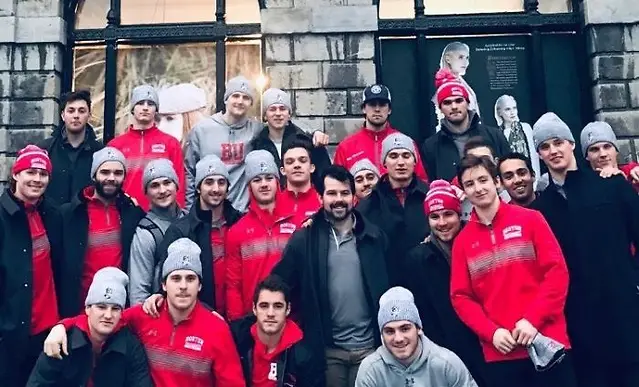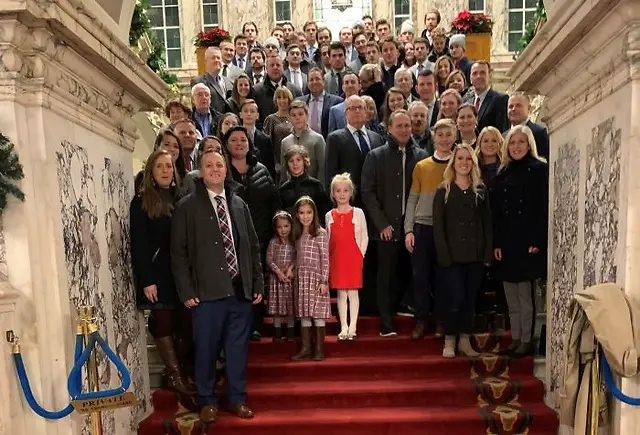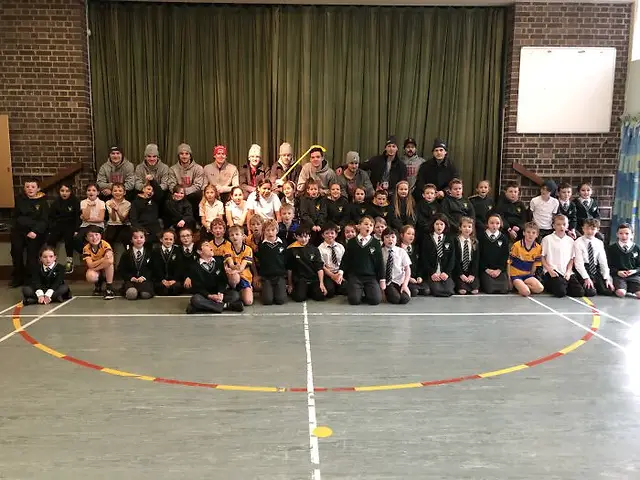
This week, for the fourth straight year, two teams from both Hockey East and the ECAC travel to Belfast, Northern Ireland, for the Friendship Four tournament, a four-team event played at SSE Arena in downtown Belfast where the winner receives the Belpot Trophy.
Four years in, let me go on the record as saying this might be the single most successful initiative that college hockey has developed in the 25-plus years I have been associated with the game.
Taking the college game abroad is only a fraction of the importance of this tournament. The reality is that going to Northern Ireland likely won’t create the same recruiting frenzy for the college game as going to a larger target market for players like Finland, Russia or the Czech Republic.
But because of the sport of hockey’s relative diminutive status in both Ireland and Northern Ireland, the impact of these four teams traveling there actually becomes magnified.
From concept, the Friendship Four has always been about much more than hockey. Unlike a tournament like, say, the Great Lakes Invitational or any other holiday tournament, players don’t arrive a day or two before the opening game.
In Year 1, the four teams flew on the Monday night on a red eye arriving Tuesday before the Friday opener. By Year 4, teams have advanced that arrival even more with some teams taking morning flights this past Sunday and arriving that evening in Dublin.

It’s not just about adjusting to the new time zone five hours away (though that is a significant reason to make sure you arrive early). It’s about the educational experience that the student-athletes, the coaches and those traveling with them can experience.
Between Sunday and Friday’s game day, teams will have multiple cultural experiences from both Ireland proper and the modern city of Dublin to Northern Ireland and a far more traditional city like Belfast.
This year, teams have already visited Trinity College, one of the oldest and most well-known schools in Ireland. They’ve also visited school children throughout the city of Belfast, teaching them about the game of ice hockey while learning about their different sports like hurling and camogie.
Those same school children will make up a major part of the crowd during this weekend’s games. Since its inception, the afternoon games (the first semifinal on Friday and the consolation game on Saturday) are primarily attended by thousands of school children who are bussed in from, at times, more than an hour away. For those children, whether or not they received individual visits from teams, they were taught as part of the curriculum about at least one team and the students make signs and learn chants to support that school.
The scene for those games is pretty unique. To see (and hear the screams) of thousands of young, school-aged children all being exposed to the game of ice hockey – some for the first time ever – is riveting.
That, though, is a what makes this tournament so special.
Far too often, sports in Ireland translate to a battle between Catholics and Protestants and all too frequently that results in violence. Hockey in Northern Ireland, though, is seen as a sport where there aren’t pre-established religious affiliations with teams and any physical battles are handled on the ice, not in the stands.
That’s where the Friendship Four comes in. The root concept: bring four college teams each year from the U.S. to put on display their elite play for an audience that is beginning to appreciate and adopt the sport of ice hockey.

“Belfast was a different place when hockey came here 15 years ago,” said Shane Johnson before the first tournament in 2015. Johnson is a project manager for the Belfast Giants and, from Year 1, one of the primary organizers of the Friendship Four. Johnson also played collegiately at Boston University in the mid 90s, then professionally in England before being one of the original Giants players in 2000. “When the Giants came here, there was still a lot of tension between religious groups. It was a sport that wasn’t tied to either religion like rugby or football (American soccer).
“They were very careful when the Giants came around that nobody could say this team was one religion or another.”
To this day, the Giants remain the only professional hockey team in Northern Ireland and Ireland. Their supporters see this as the one sport with unification in the dual countries.
In fact, hockey in Northern Ireland might be one of the most unique sports the country can offer.
There are no county colors associated with the Giants. Instead, the team chose teal as its primary color so that no religion, county or other supporting group could claim an ownership.
The fans have embraced it. When in Belfast, the Giants are the major professional team and it is Belfast against the others – teams from across Great Britain playing in the Elite Ice Hockey League, Great Britain’s equivalent of the NHL. If anything, hockey has built solidarity.
That is what is on display this weekend and every year as part of the Friendship Four.
Originally conceptualized as maybe a one- or two-year event, the stranglehold it has produced on not just Belfast but on Hockey East and the ECAC is strong enough that year five is already scheduled (Northeastern and Colgate will be repeat participants; New Hampshire and Princeton will make their first appearances in the tournament).
And that’s a very good thing for college hockey.
The Friendship Four’s ability to not just create a cultural tie with Northern Ireland, but also to build lasting experiences and memories for more than 100 college athletes each year makes this one event you would love to see on the college hockey calendar for years to come.


